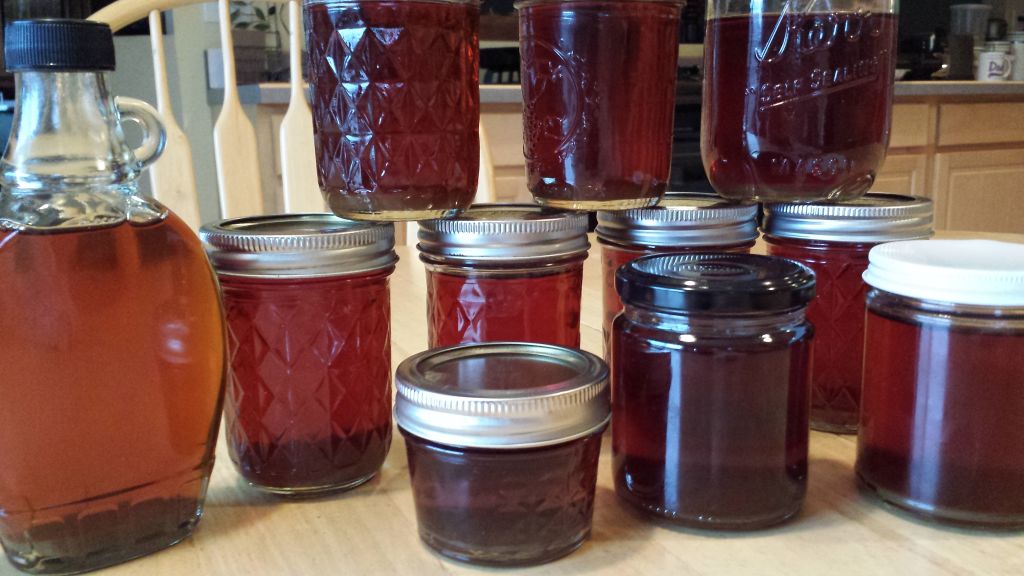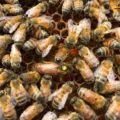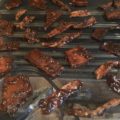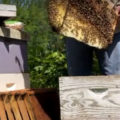See part two to this series here.
I remember my dad tapping maple trees as a kid. He told all the neighbors that if they let him tap their trees, they’d be invited to the “big pancake breakfast” that he’d throw at the end. Today, someone might look at you like you had two heads. It’s amazing how times have changed. Dad had a number of pots he rigged up over a fire… not really worrying about the smoke “tainting” the sap as it cooked down. In fact, I can’t remember anything too terrible about it. It’s a wonderful childhood memory for me… and one I planned to revive.

As I was gearing up, my wife and some others commented “just what you need, another hobby” but really, I have been thinking, and planning about tapping maple trees for about 2 years now. It happens during a time of year that I consider downtime and I’ve always wanted to try it out just as a homage to dad. So, this was the year.
Sourcing and fixing the evaporator, and building the arch. I was all set to convert a 55-gallon drum into a wood stove and set up some steam table trays on top to evaporate. By a happy coincidence, a fellow beekeeper found out I was interested in getting set up and offered me a deal on an evaporator she used before it was hurled by a tornado. She made me a good deal, so I grabbed it. So while my original plans with the barrel were changed, it was OK since the new set-up was going to be a lot more efficient… after I built the arch.
I picked up the evaporator and had it turned into usable shape by the end of the day. The next morning, I picked up the materials for the arch. It was a simple setup with c-blocks designed to hold the pan, and steer the smoke out the flu and away from the surface of the boiling sap. See the pics below for more details. All setup, I commenced boiling.
Here are the notes I’ve been keeping so that I know how much sap I can cook and for how long.

Tapping trees, and sap flow. I started with 10 taps at the beginning of this week and collected 6 gallons in the first 24 hours (a good, sunny day). The next two days remained colder and overcast and sap slowed a lot. Today (Sat.) was a bright sunny morning. I went back and some jugs were overflowing. I collected another 6 gallons and came back to boil… starting with 12 gallons of sap.
Cooking and gallons per hour. I started cooking the initial 12 gallons at 1:30 pm. After getting everything situated, I noticed the gallon jug I had up near the house was over half full already. I collected that and rolled out to the backwoods to check those too. I came back with another 5 and a half gallons or so. That’s another 6 gallons. I added it to the warmer and allowed it to trickle into the evaporator. Everything was finished and ready to bring inside at 5:30. So, 18 gallons in 4 hours. That’s about 4-5 gallons per hour. I think I can do better here as I was still getting used to the fire and the new set-up. But, that’s totally reasonable, and I was sad that the fun was over so fast!
Yield. I brought the concentrate inside to finish in a pot on the stove. It went fast. I think I actually cooked it too long. It became thicker than it seemed it was supposed to. Also, it had a very, very sugary taste. It wasn’t terrible, but not what I remembered from when I was a kid. It’s also possible there was some scorching going on too. All said a total of 23 gallons of sap yielded a little over 2 quarts. You can see the jars I filled in the pics below.
Correcting my maple syrup. Reading more about how to thin it… people said to add more sap. Well, I knew there was more out back… so I went out in the dark and collected another 5 gallons. (If you’re keeping track, that’s 17 gallons from 10 taps in one day.) I brought this back and decided to cook this down in two pots on the stove. It definitely took longer (as I sit here at 2:17 am finishing up). All this effort to correct what I think may have been cooking too much water out. Slowly I start consolidating the fresh syrup/sap into the finished to thin it down. It’s tasting better and the consistency is much better. Barring any last-minute issues, I’ll consider it a success for my first attempt.
Update 2-14: We just boiled another 85 gallons of sap. It took 12 hours from the main evaporator to the pot inside. It yielded just over 7 quarts for finished syrup. Right now, we’re in a cold spell. Since we have 23 taps in my home sugarbush, and another 12 at a friends, we’re expecting a flood when it warms back up again.
See part two to this series here.








































Your set up looks great congratulations on your harvest. Is it too late in our region to tap for this year?
Hi Alison, the trees start to flow when the weather gets below freezing at night, and above freezing during the day. It acts as somewhat of a pumping action for the sap. Definitely an end of winter thing. Hope this helps.
Jason,
I have always wanted to tap trees for syrup since I saw it being done in Troy Ohio as a child. Where does one go to find taps (google)? And please name some trees other than maple that you had success. I have a few acres in Dearborn County but few maples. Thanks, and I am new to your site and we have many similar interests. Best of luck.
Joe, sorry for my delay in response! I have tapped walnut trees with success, but mostly sugar and silver maples. They render the most syrup. You can get taps cheap off the internet. On Amazon, search for maple taps and they are really cheap. I’m in dearborn county too so we’re close.